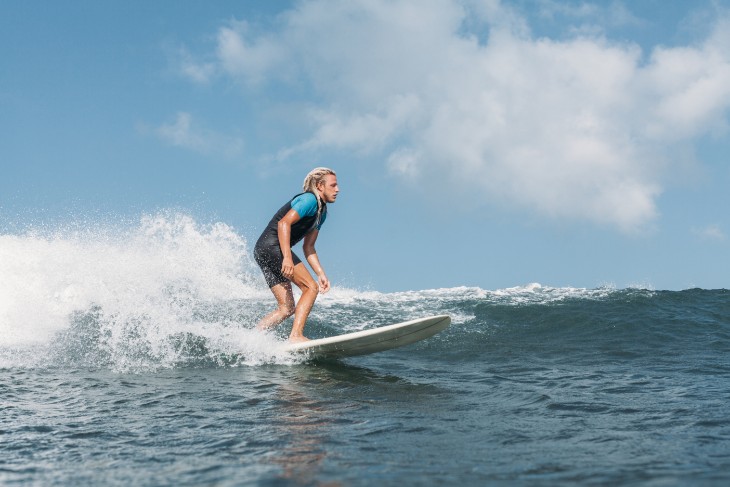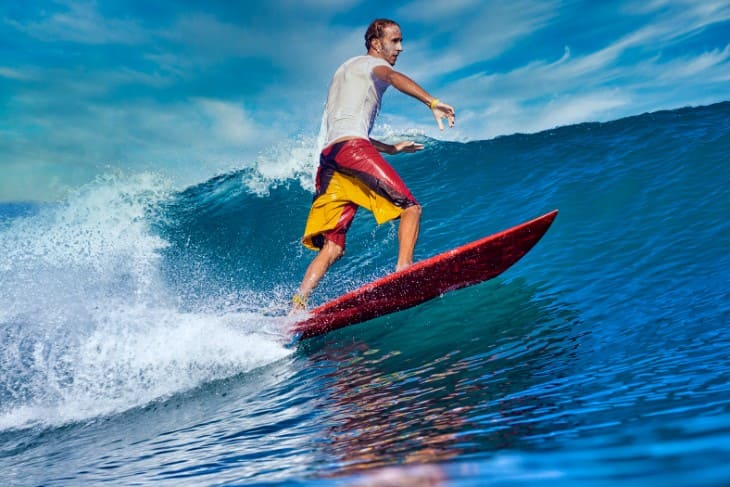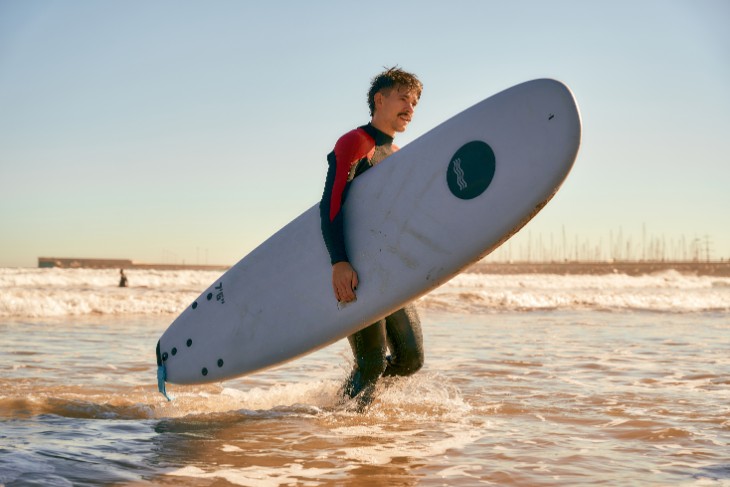Long story short:
As of May 2025, Hawaii is moving closer to making surfing a fully supported public high school sport statewide. With new legislation proposing dedicated funding and growing community interest, schools may soon expand programs beyond Maui, giving more students access to structured surf competitions and training.
Introduction
Surfing has been officially recognized as a high school sport in Hawaii since 2004, but it has seen limited implementation across the state. As of May 2025, only the Maui Interscholastic League regularly holds competitions, while other school districts have not adopted the sport in a structured way. Recent legislative action, including House Bill 133, proposes dedicated funding to expand surfing programs statewide. If passed, this funding would support infrastructure, staffing, and competitive opportunities, making it possible for more public high school students to participate in an organized surfing season.
Historical Context
Although surfing holds historical and recreational significance in Hawaii, its integration into the high school sports system has been inconsistent. The Department of Education sanctioned surfing as a sport in 2004, but implementation has varied across islands. Key points include:
- Limited Adoption: The Maui Interscholastic League (MIL) remains the only league to consistently run organized high school surfing competitions.
- Isolated Programs: Other districts have expressed interest over the years but have lacked the funding, staffing, or infrastructure to establish formal programs.
- Missed Opportunities: Without consistent access to school-supported surfing, many students are unable to participate competitively unless they join private clubs or local organizations.
This background helps explain the renewed push for statewide funding and formalization of the sport in 2025.

Legislative Developments
Recent efforts at the state level aim to address the uneven adoption of high school surfing programs. A key piece of legislation introduced in 2025 is House Bill 133, which outlines a plan to fund and support surfing as a formal high school sport. The bill includes:
- Annual Funding: $685,870 allocated for both fiscal years 2025–2026 and 2026–2027 to cover staffing, equipment, and administrative costs.
- Statewide Implementation: The goal is to establish surfing teams and competitions across all public high school districts, not just on Maui.
- Political Support: The bill has passed both the House and Senate and is backed by Governor Josh Green, indicating strong momentum toward enactment.
If fully implemented, this legislation would create the infrastructure needed to support surfing as a sustainable and accessible sport in public schools across Hawaii.
Community and Cultural Significance
Surfing’s inclusion in high school sports is more than an administrative change — it reflects strong community interest and aligns with student needs. For many families and educators, providing access to surfing through schools ensures that students can participate in an activity they already engage with outside the classroom. It also helps reduce reliance on private clubs, which may not be financially accessible to all students.
Teachers and coaches have noted that school-based surfing programs promote student engagement, discipline, and physical well-being. More importantly, offering surfing as a formal sport recognizes its relevance to students' lives and validates the interests of youth who may not connect with more traditional team sports.
Support from school communities has grown, and the push for statewide adoption shows that there is demand for a more inclusive and locally relevant range of athletic programs in Hawaii's public schools.
Challenges and Considerations
While the expansion of high school surfing is gaining support, several practical challenges remain. One of the primary concerns is student safety. Surfing carries inherent risks, and any school-based program would need to ensure that students are supervised by qualified coaches and lifeguards, and that emergency protocols are clearly established.
Another major consideration is resource allocation. Many schools face budget constraints, and adding a new sport requires investments in equipment, transportation, and staffing. Some districts may also need to coordinate with local beaches or surf organizations to secure safe and accessible surf spots for training and competitions.
In addition, scheduling and logistics could present hurdles, especially on islands where students may have to travel significant distances to reach surf locations. Addressing these issues will be essential to ensure the sport can be adopted consistently and sustainably across the state.
Success Stories and Pilot Programs
Although surfing has yet to be widely adopted across all of Hawaii's public schools, there are strong examples that show how the sport can be integrated effectively. The Maui Interscholastic League (MIL) has been running organized high school surfing competitions since 2014. This long-standing program demonstrates that with the right support, surfing can function as a structured and competitive sport within the public school system.
Individual success stories also highlight the positive impact of school-based surfing programs. For example, Matthew Legg, a student at Farrington High School on O‘ahu, participated in a pilot program where he not only learned to surf, but first had to learn how to swim. His experience underscores how access to these programs can provide life skills, personal growth, and athletic opportunity — even for students starting with little to no experience.
These examples help make the case that expanding surfing across Hawaii's schools is not just feasible, but beneficial for a wide range of students.

Future Outlook
With legislative momentum and community support behind the expansion of high school surfing, the outlook for the coming years is promising. If funding through House Bill 133 is finalized and distributed effectively, schools across Hawaii could see a phased rollout of surfing programs starting as early as the 2025–2026 school year.
Expected developments include:
- Broader Participation: More public high schools across all islands may begin offering surfing as part of their athletics programs.
- Coaching and Infrastructure: Schools will likely need to hire certified coaches and establish partnerships with local surf organizations or community facilities.
- Statewide Competition: A formal league structure could emerge, leading to regular interscholastic meets and possibly a state championship in future years.
- Academic Integration: Some programs may also explore connections between surfing and coursework in oceanography, physical education, or Hawaiian studies.
These efforts would help normalize surfing as a legitimate, structured athletic option, and ensure that students in all regions of the state can participate.
Conclusion
The effort to establish surfing as a standard high school sport across Hawaii represents a practical response to student interest and a step toward greater inclusivity in school athletics. While the sport has long been officially recognized, implementation has remained uneven for two decades. With new legislation, funding, and community backing in place, that is beginning to change.
By addressing logistical challenges and learning from existing models like the Maui Interscholastic League, Hawaii’s public schools have the opportunity to create consistent, accessible programs that support student development and expand the range of athletic options. As these programs roll out, they will not only offer new competitive outlets, but also reflect the state’s evolving approach to education and extracurricular engagement.


